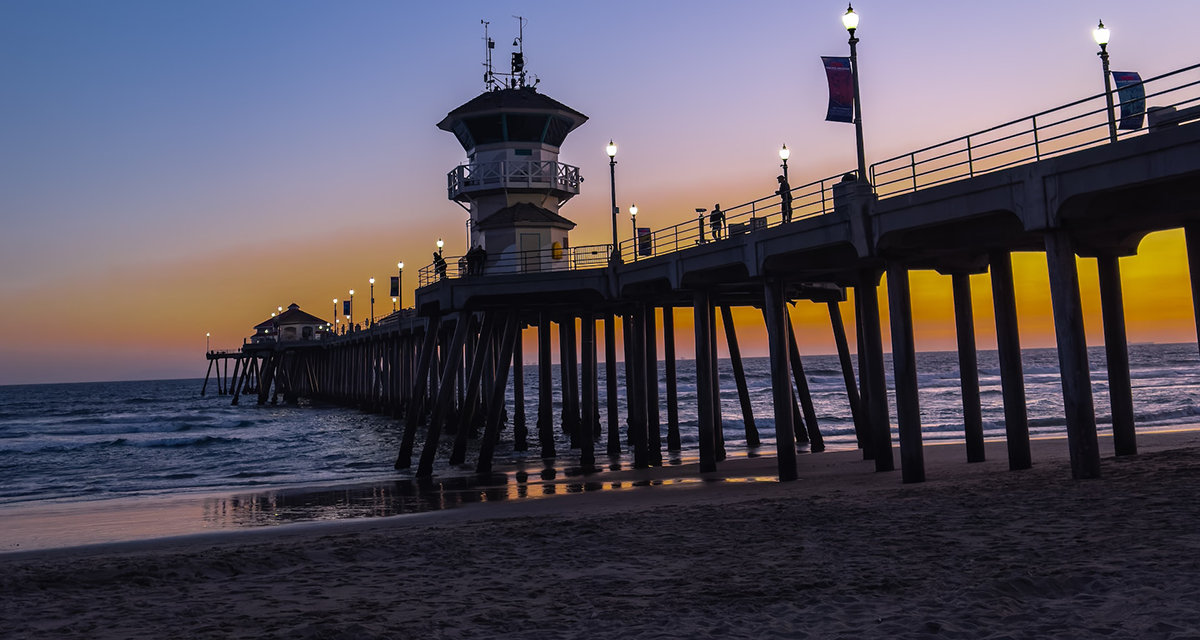Before its iconic pier stretched into the Pacific, Huntington Beach was the ancestral home of the Tongva people.
This land of natural abundance later became part of the Spanish land grants, specifically the vast Rancho Los Nietos, which set the groundwork for its diverse future.
The initial land grant influenced the area’s early development, laying out a framework of ranching and agriculture that would dominate the region until the turn of the 20th century. This era saw the transition from native land to Spanish, then Mexican governance, and finally American settlement, each period leaving its imprint on the landscape.
With the conclusion of the Mexican-American War and California’s statehood, the land comprising present-day Huntington Beach began to change hands through purchase and legal dispute. These transactions paved the way for the city’s incorporation and subsequent development, setting the stage for a community that would become synonymous with surf culture.
The Birth of a City: Incorporation and Development
Huntington Beach officially became a city in 1909, named after Henry E. Huntington, a prominent American businessman who brought the Pacific Electric Railway to the coast.
This connection opened the floodgates to real estate development and tourism, marking the city’s first steps towards becoming a beloved seaside destination.
The oil boom in the 1920s further propelled Huntington Beach into the industrial age, with the discovery of oil transforming the economy and skyline. The city’s beach, once lined with derricks, bore witness to a period of prosperity that funded infrastructure and community growth.
This economic surge, however, was not without environmental and social consequences.
As the city grappled with the impacts of industrialization, it began to shift towards leisure and tourism as its main economic drivers, a move that would redefine its identity in the decades to come.
Amidst this transition, the city suffered during the Great Depression but rebounded with strategic initiatives that capitalized on its coastal location. Post-war prosperity saw Huntington Beach grow residentially and commercially, setting records in housing development and population growth.
Surf City USA: The Rise of a Cultural Phenomenon
In the mid-20th century, Huntington Beach cemented its reputation as “Surf City USA.”
The surf culture took root with the establishment of the U.S. Surfing Championships in 1959, and the city became a magnet for surfers and beach enthusiasts from around the world.
The surfing legacy of Huntington Beach has been celebrated and preserved through the Surfing Walk of Fame and the International Surfing Museum. The city’s identity is intertwined with the sport, attracting visitors and professionals alike, drawn by the promise of perfect waves and a laid-back lifestyle.
This cultural identity has fueled a robust tourism industry, with the city hosting numerous surf competitions and events year-round.
The economy has thrived on this image, supported by businesses and services that cater to the surf and beach community.
The pervasive surf culture of Huntington Beach has also influenced local governance, with city planning and environmental policies crafted to protect the beaches and marine life. This delicate balance of culture and conservation continues to shape the city’s development.
Huntington Beach Today: A Coastal Community in Balance
Today, Huntington Beach stands as a vibrant community that honors its surf heritage while embracing a future of innovation and sustainability.
The city’s focus on clean beaches, green spaces, and renewable energy reflects a commitment to preserving the natural beauty that defines it.
Q&A: Navigating the Swells of Huntington Beach’s History
Q: What were the significant factors in Huntington Beach’s early growth?
A: The arrival of the Pacific Electric Railway and the discovery of oil were pivotal, driving real estate development and economic prosperity that laid the foundation for the city’s growth.
Q: How did Huntington Beach earn the title “Surf City USA”?
A: The city’s consistent waves and surf culture, highlighted by the U.S. Surfing Championships, earned it the moniker “Surf City USA,” a title that has been embraced and marketed by the community.
Q: What role has environmental conservation played in the city’s development?
A: Environmental conservation has been crucial, with the city implementing measures to protect its coastal and marine ecosystems, ensuring that development is sustainable and balanced with ecological concerns.
Q: How does the city balance its surf culture with economic and community development?
A: Huntington Beach balances surf culture with development by integrating it into the local economy through tourism, while also investing in community services and infrastructure that benefit all residents.
Q: In what ways does the city commemorate its surfing history?
A: The city commemorates its surfing history through the Surfing Walk of Fame, the well-known International Surfing Museum, and by hosting prestigious surf competitions that celebrate the sport and its athletes.
Q: What challenges does Huntington Beach face today, and what steps are being taken to address them?
A: Challenges such as coastal erosion, climate change, and maintaining economic vitality are being addressed through environmental initiatives, community engagement, and by promoting diverse economic opportunities.
Huntington Beach’s Continuing Saga
Huntington Beach’s history is a vibrant narrative of change, culture, and conservation.
As the city looks to the future, it carries the legacy of its past—the spirit of its indigenous peoples, the ambition of its early developers, and the soul of its surf culture. It remains a city that is as much about the waves it rides as the roots it has planted firmly in the sands of time.
How will it navigate the future tides while staying true to the essence that has made it an iconic California city?





